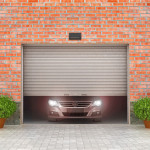 There’s nothing like moving — whether it’s across town or across the country — to make you realize just how much stuff you have! When moving, you’re likely to let some things go, but probably also add some new appliances, furniture and other items to your list of possessions. That’s why once you’re settled into your new home, it’s an ideal time to create or update your home inventory. Here are the three components of an effective home inventory:
There’s nothing like moving — whether it’s across town or across the country — to make you realize just how much stuff you have! When moving, you’re likely to let some things go, but probably also add some new appliances, furniture and other items to your list of possessions. That’s why once you’re settled into your new home, it’s an ideal time to create or update your home inventory. Here are the three components of an effective home inventory:
Photos or video. You can take photos or video, but you’ll want shots of entire rooms and close-ups of items such as electronics, jewelry, collectibles, guns and any individual items of significant value. It’s a good idea if you’re using video to provide narration as you walk through each room, explaining what you are recording. Take your time while taking photos and videos. If you ever have to make an insurance claim, you’ll want as detailed information as possible about what you own. Don’t forget to include items inside closets and in drawers.
Take video outside the home as well, including the interior of any outbuildings or storage.
A written inventory. You’ll also want to prepare a written inventory of your belongings. You can create a Word document on your computer or use a blank sheet of paper. Keep your written inventory with receipts for items you’ve purchased. Include as much detail as you can about each item. Rather than ’55-inch television set,’ include the year, manufacturer and model if you can. The more expensive the item, the greater your detail should be.
It’s a good idea to get in the habit of keeping receipts for big-ticket items in a file that can be included as part of your home inventory.
Safe storage. If you have a fireproof safe, keep both your visual and written inventories there or in another safe place. You also may want to keep a copy off-site as well, in a safe deposit box or with a trusted friend or family member. If your written and visual inventory is saved electronically, make sure it’s backed up.
Having a home inventory makes surviving and dealing with a home disaster a lot less stressful. Hopefully, you’ll never need one. But if you do, it can make all the difference in the world. Can you imagine trying to recount every single item in your home that was damaged, destroyed or stolen? With a home inventory, you’re more ready for the unexpected.








